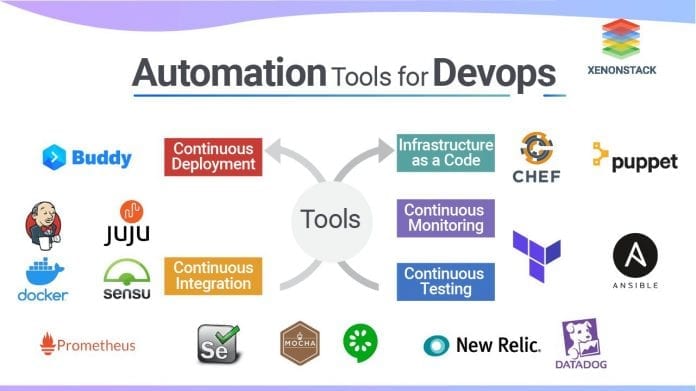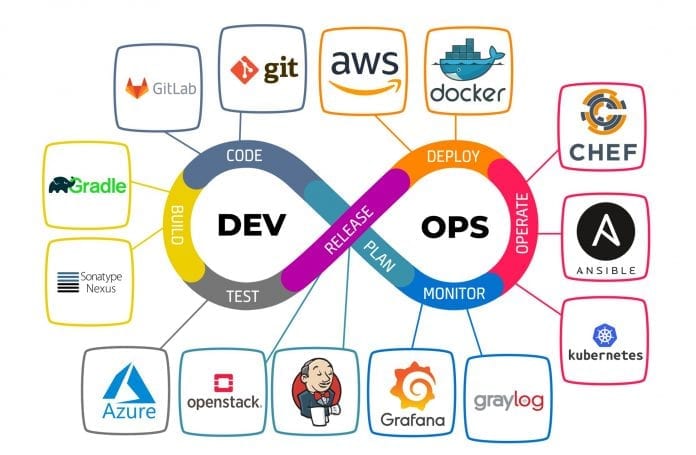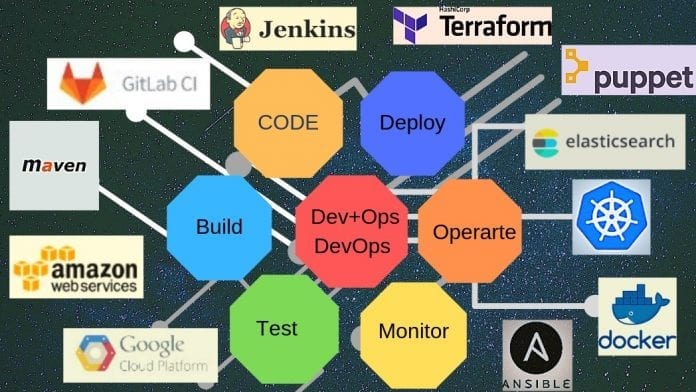In the past 20 years, the software industry has been developing rapidly. The standards are continually rising through evolved digital experiences. Even though this is generally a good thing, it has created a big issue for the industry.
Consumers have gotten used to getting the best experiences, and they demand nothing less. This is why developers worldwide are using DevOps to make their development efficient, along with maintenance, deployment, and testing.

But beyond the development process, there are plenty of other benefits of DevOps, too. For starters, it allows for better collaboration. This is because it promotes an environment where teams must work together towards common goals and objectives; this team-focused approach to development paves the way for better company culture and engagement. It also allows you to create better software at a quicker pace, leaving room for creativity and flexibility.
Although DevOps has many different definitions, several principles define it. This includes early development, learning, sharing feedback, and collaboration. All of these things lead to security, scalability, and better predictability. Luckily, developers can find various DevOps platforms they can use to establish the right approach.
Proper Automation Support

Automation is essential in a DevOps approach as it has a fantastic ROI. Automation and standardization can reduce human errors during deployments, make them more predictable, and more comfortable overall. This is why platforms like JFrog can control and manage all binary repositories.
Automation is the foundation of DevOps, as it enables developers and project members to benefit from greater control, consistency, and speed of their products. It helps ops and developers collaborate effectively, deploy tasks with ease, and automate builds. On top of that, these tools let teams containerize applications as well.
With the reduction of repetitive manual tasks that are not essential, teams can improve testing and development speeds. At the same time, all of the human errors are reduced. This leaves more resources to be focused on essential tasks.
On the same token, it’s important to strike a balance between automation and manual involvement. Believe it or not, it’s possible to over-automate—for example, you might link too many tools together or automate processes that could benefit from a human eye. If you feel you or your team getting too far from your core code, think about how you can create a more harmonious workflow that doesn’t over or under automate.
Multi-Cloud and Hybrid Support

Multi-cloud computing offers at least two public clouds within a network to help achieve business goals. This offers several advantages, such as:
- Decreased latency
- Improved flexibility
- Reduced overhead
- Improved consistency
- Vendor lock-in prevention
Still, this approach requires special attention to governance and security to prevent issues. On the other hand, the hybrid cloud combines off and on-premises IT infrastructures. This cloud technology lets companies move applications or data back and forth between public and private clouds. Click here for more info: https://duplocloud.com/.
This lets companies make the most of both environments with the right approach. Some of the key benefits are:
- Reduced costs
- Scalability
- Flexibility
Does it Enable Collaboration?
Collaboration is one of the essential principles of the DevOps approach. This is why you should look for tools that enable collaboration. It’s possible to collaborate on third-party software, but why split your process on different platforms?
Let’s look at version control as an example. If your goal is to make team members use version control along with configuration files and database scripts, you will have to enable them with the right platform. Look for a tool that will let you add metadata in a single place with all relevant information.
This includes the date of creation, author name, and other details. At the same time, your DevOps tool should let you manage permissions and add multiple team members to the same task. This way, you will be able to collaborate with accountability.
Many modern tools designed to help streamline DevOps allow integration with other applications, and you should take advantage of this when you can. Each of your daily work tools should be easily connected to one another to prevent constant toggling between tools. For example, if you use Slack to communicate, then you should be using Slack with other tools, like your project management software, Git, JIRA, etc.

Integration is Important
One of the most common issues that companies have when using DevOps is that this approach requires various integrations. Simply put, both operations and development teams use a wide range of tools for their work. All of these tools need to combine their work in a single platform.
This is what you need from your DevOps tool. Lots of platforms promise integrations, but not all integrations are the same. No matter what web service or API your application provides, it needs to be connected to a centralized environment.
At the same time, this automation tool needs to be application-agnostic to prevent any misunderstandings between integrations.
Frequent Updates
The software industry is continuously evolving. At the same time, the demands and technologies are moving forward as well. This means that your environment needs to keep up with all of these changes. Customers want to get new features as quickly as possible.
That’s why you need a tool with continuous delivery, deployment, and integration combined with automation. These things are always changing in their integrations and interactions between different tools, new methods, and technologies. Frequent updates also ensure that your cyber safety protocols are being met time and time again.
No matter what platform you are looking at, make sure that it has frequent updates. All multi-cloud, hybrid, on-premises, and self-managed environments need to be updated consistently.
Bottom Line
DevOps is becoming more popular each year. This is a modern IT approach that helps execute business goals more effectively. If you want to make this approach more effective and innovate in new solutions, it’s essential to offer proper support with a comprehensive environment. This way, you can rest assured, knowing that you did everything to streamline the process as much as possible.









